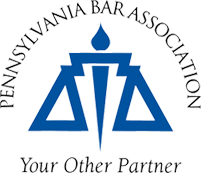Scranton lawyer Dante A. Cancelli received a write-up in the Scranton Times at the end of May 2004 for assisting the 1,000th client of Lackawanna Pro Bono Inc. The program puts needy clients in touch with lawyers who will work for free. The woman asked that Mr. Cancelli not divulge her name or hometown, but the case involved drawing up a power of attorney.
The Lackawanna Bar Association honored Mr. Cancelli with a special program at its headquarters.
�What pro bono means to me is that what a wonderful world it would be if we all practiced the golden rule,� Mr. Cancelli was quoted in the article. �On over 1,000 occasions has the golden rule been practiced by lawyers through Pro Bono.�
The Scranton Times article noted that the Lackawanna Pro Bono, Inc. program, operating since October 1997, is one of three organizations that provides lawyers free-of-charge to Lackawanna County residents. North Penn Legal Services, like Lackawanna Pro Bono, deals exclusively with civil cases � everything from landlord/tenant disputes to protection-from-abuse orders. The county public defender's office handles only criminal defendants charged with crimes serious enough that they may go to jail.
Sylvia H. Hahn, Lackawanna Pro Bono�s executive director, also was quoted in the story. She noted that the bar association works closely with Pro Bono and pays for some of its work, explaining that both Lackawanna Pro Bono and North Penn Legal Services only accept clients who make 125-percent or less of federal poverty guidelines � or just under $20,000 a year for a single parent with two children.
About 60-percent of Lackawanna Pro Bono�s clients are female heads of households, Hahn added in the article. Approximately one-quarter of the total clients are employed, one-quarter are on disability and one-half are on unemployment, other support or have no income at all.
| 